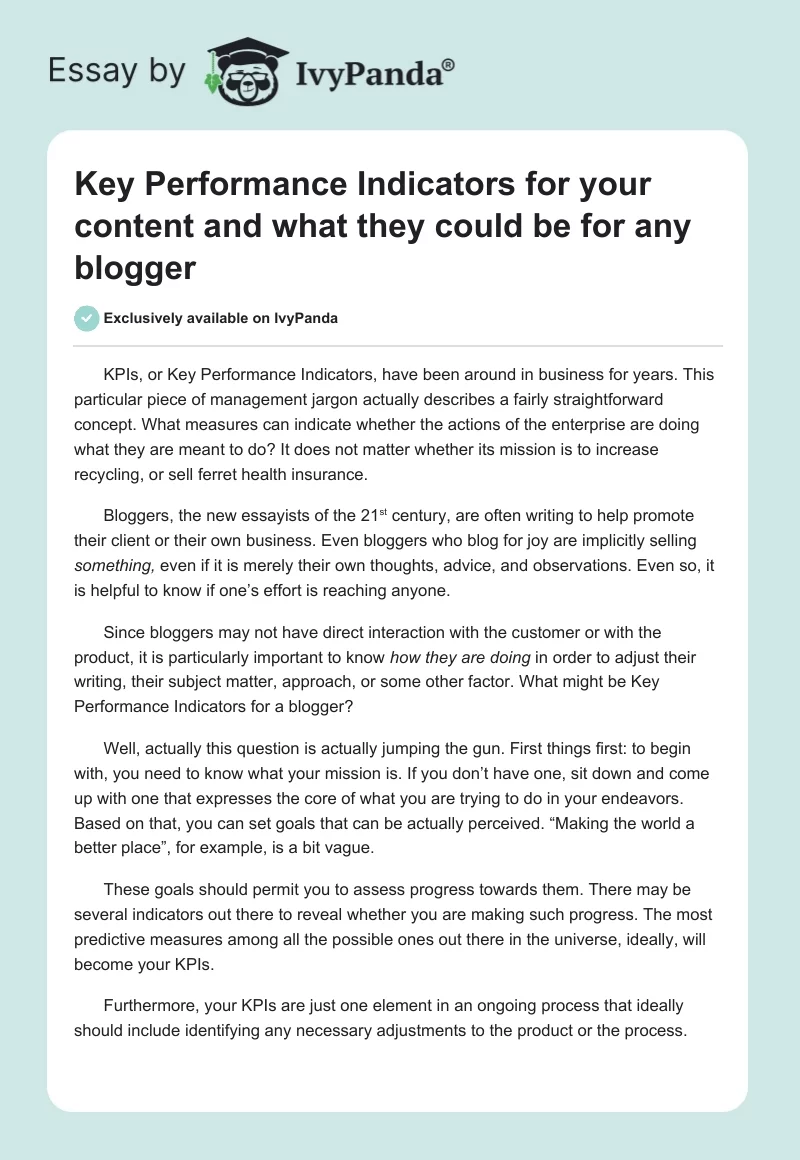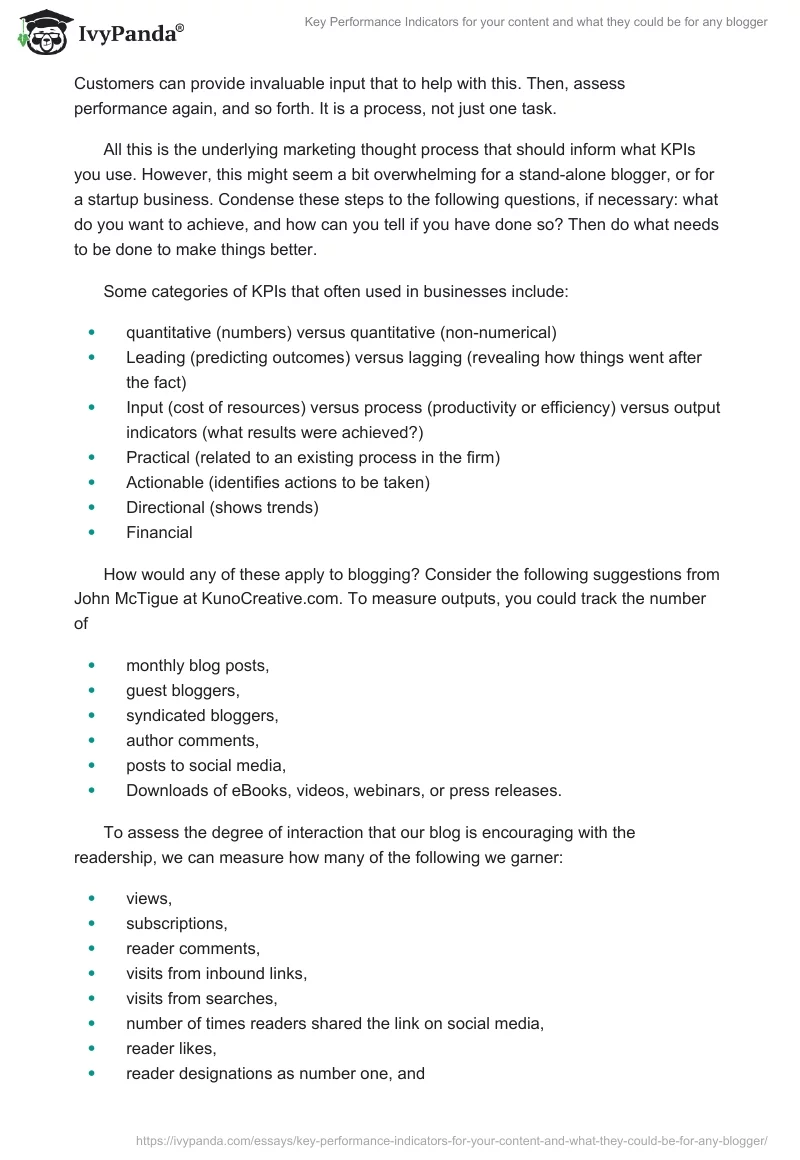KPIs, or Key Performance Indicators, have been around in business for years. This particular piece of management jargon actually describes a fairly straightforward concept. What measures can indicate whether the actions of the enterprise are doing what they are meant to do? It does not matter whether its mission is to increase recycling, or sell ferret health insurance.
Bloggers, the new essayists of the 21st century, are often writing to help promote their client or their own business. Even bloggers who blog for joy are implicitly selling something, even if it is merely their own thoughts, advice, and observations. Even so, it is helpful to know if one’s effort is reaching anyone.
Since bloggers may not have direct interaction with the customer or with the product, it is particularly important to know how they are doing in order to adjust their writing, their subject matter, approach, or some other factor. What might be Key Performance Indicators for a blogger?
Well, actually this question is actually jumping the gun. First things first: to begin with, you need to know what your mission is. If you don’t have one, sit down and come up with one that expresses the core of what you are trying to do in your endeavors. Based on that, you can set goals that can be actually perceived. “Making the world a better place”, for example, is a bit vague.
These goals should permit you to assess progress towards them. There may be several indicators out there to reveal whether you are making such progress. The most predictive measures among all the possible ones out there in the universe, ideally, will become your KPIs.
Furthermore, your KPIs are just one element in an ongoing process that ideally should include identifying any necessary adjustments to the product or the process. Customers can provide invaluable input that to help with this. Then, assess performance again, and so forth. It is a process, not just one task.
All this is the underlying marketing thought process that should inform what KPIs you use. However, this might seem a bit overwhelming for a stand-alone blogger, or for a startup business. Condense these steps to the following questions, if necessary: what do you want to achieve, and how can you tell if you have done so? Then do what needs to be done to make things better.
Some categories of KPIs that often used in businesses include:
- quantitative (numbers) versus quantitative (non-numerical)
- Leading (predicting outcomes) versus lagging (revealing how things went after the fact)
- Input (cost of resources) versus process (productivity or efficiency) versus output indicators (what results were achieved?)
- Practical (related to an existing process in the firm)
- Actionable (identifies actions to be taken)
- Directional (shows trends)
- Financial
How would any of these apply to blogging? Consider the following suggestions from John McTigue at KunoCreative.com. To measure outputs, you could track the number of
- monthly blog posts,
- guest bloggers,
- syndicated bloggers,
- author comments,
- posts to social media,
- Downloads of eBooks, videos, webinars, or press releases.
To assess the degree of interaction that our blog is encouraging with the readership, we can measure how many of the following we garner:
- views,
- subscriptions,
- reader comments,
- visits from inbound links,
- visits from searches,
- number of times readers shared the link on social media,
- reader likes,
- reader designations as number one, and
- Comments on social media.
The most important measures for sales are conversion statistics. These can include tracking how many leads have been generated from the call to action (or CTA) from
- blog posts
- blog post links
- blog page
- social media posts (by your readers)
- press releases
- downloads of longer documents, such as a pdf
- webinars
- landing pages
- content as customer’s first contact with your endeavor
- content as customer’s last contact before taking action
- revenue generated by the blog, or other single marketing activity
In very practical terms, you can also design your web page and your blog to capture data very precisely. For example, if you put the information about different services that you offer on different individual pages, you will capture specific information about the amount of interest and the number of eyes on that content from the clicks on each page.
If you have blog posts on different pages rather than available to simply scroll down, you will get more information about which blog posts are most appealing or compelling. However (and this is really important), you need to consider that many readers today may access your content from a device with a data plan.
In other words, people may be paying for a measurable number of kilobytes of data every time they click. Be conscious of this and considerate of your readers when you design your web presence. You may actually alienate readers if they have to keep clicking and clicking to get to your content. Be sensitive to this as you balance your need to capture data, and your need to make your blog readily accessible to all readers.
If you have the resources, as a mid-level firm, there is a good subscription tool available to keep track of all sorts of analytics, called Domo.com. They plan to roll out a tool for small or startup firms within the next year, so check them out. You can also use plug-ins available through WordPress, which is a modest investment for newbies or small enterprises. With a bit of instruction, you can probably get much of the most important data that you need on your own. This will definitely help you become a more effective blogger.


